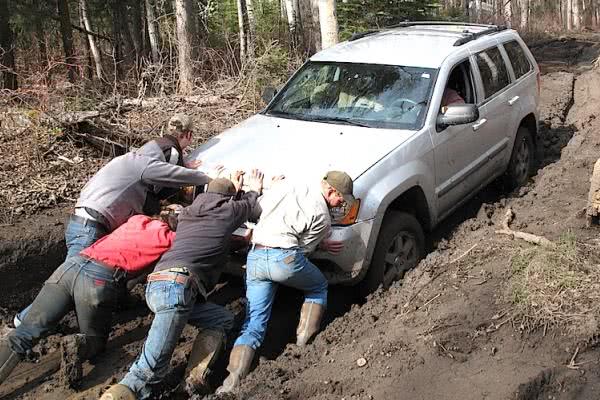

Push starting can be done in a similar way to the forward motion gears. Remember reverse is also a low-ratio gear like the 1st gear. Push starting a car in reverse might increase the strain exerted on the clutch and the transmission just like the 2nd gear. It is easy to notice a significant jolt as you release the clutch while you push start the car in reverse.
Choose the correct gear
The answer is the 2nd gear as a priority. However, in case there is only a short distance for you or you can only push it slowly, the 1s1 will do a better job.
The 3rd or 4th gears are advisable when you are fortunately doing the push starting on a downhill. In essence, the faster you can push, the higher gear to choose.
You should also keep in mind that push-starting with a wrong gear could lead to damage as well. For instance, when your car is enjoying a strong momentum and speed as it is pushed downhill, using the 1st gear might harm the transmission.
What damage it could bring
Constant practice of push starting exerts extra stress on the clutch and transmission. In fact, plenty of car makers by car manuals advise against push starting and bump starting because it may bring damage the catalytic converter.
Push starting an automatic car
This starting technique can’t be applied on automatic transmission cars. Only do the push starting with manual ones.

Keep in mind to avoid the 1st gear unless you’re pushing really slowly
6 tips to push start a car
- More people means more power and your car will be faster pushed, so the engine also comes to live faster.
- If you found the battery has died for an unknown reason such as leaving the a/c on overnight for instance, have it checked as soon as possible after you have push started your car. You may need to replace the battery or may have a failed alternator.
- Keep in mind to avoid the 1st gear unless you’re pushing really slowly. The best choice will be the 2nd or 3rdgear from 10mph to 20mph will increase the chances of success and put less stress on the transmission and the clutch.
- Quickly and smoothly raise the clutch at the same speed as you normally change the gear to 2nd while driving.
- Make sure to turn off every electrical system before push starting.
- Right after the engine starts to work, lower your clutch again and press on the accelerator with sufficient power, which helps avoid the risk of stalling again when you drive at an improper speed for the gear.
